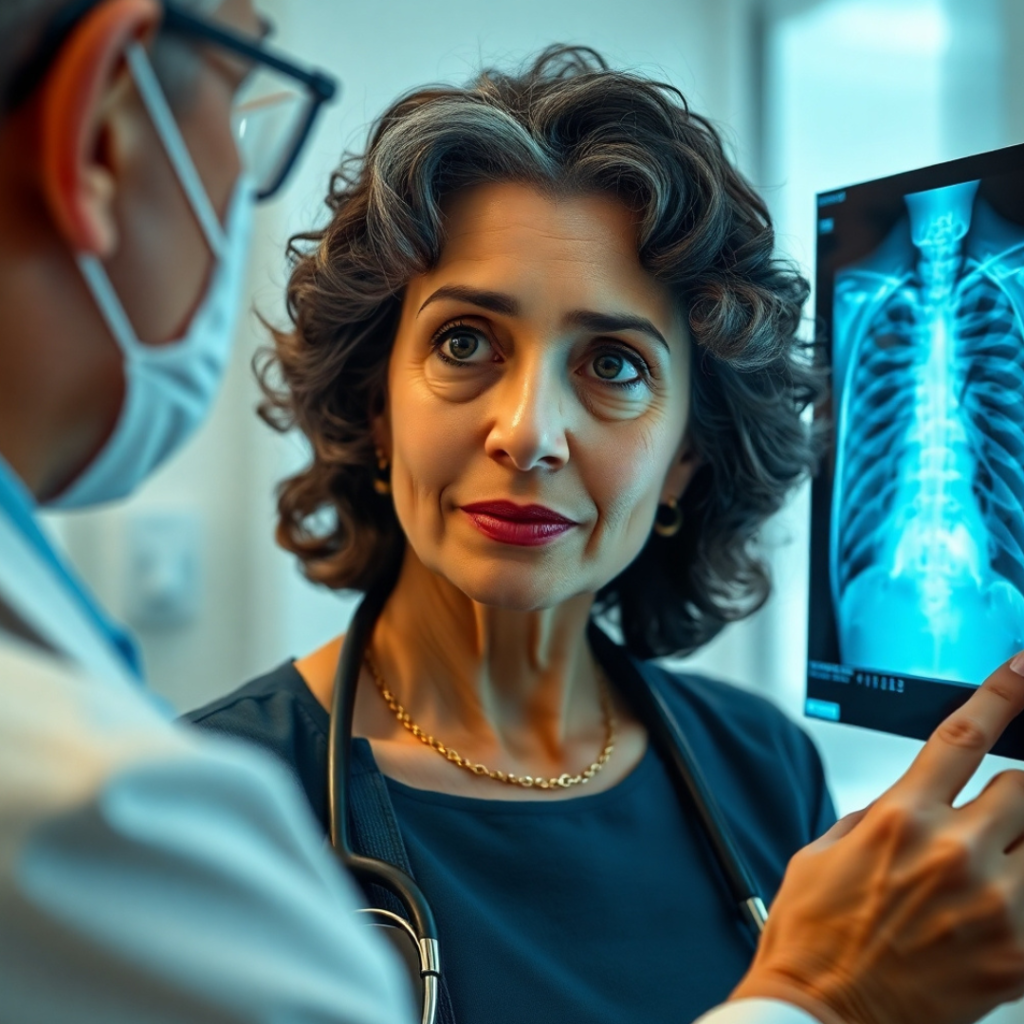
Understanding Lung Cancer Stages: A Guide for Patients and Families
When it comes to lung cancer, knowledge isn’t just power—it’s peace of mind. Whether you or a loved one has just received a diagnosis, understanding the stages of lung cancer can help you feel more in control and better prepared for the road ahead.
Staging gives your doctors the roadmap they need to treat your specific condition. For patients, it offers a clearer sense of what to expect, what questions to ask, and how to plan the next steps. In this guide, we’ll walk you through what the stages actually mean, how they affect treatment and symptoms, and what each stage could look like.
Let’s break it all down—simply, clearly, and with compassion.
What Are the Stages of Lung Cancer?
In simple terms, lung cancer staging helps doctors determine how far the cancer has spread in the body. Think of it like checking a map before planning the best route to your destination. Knowing the stage helps your care team choose the most effective treatment, while also giving you a clearer picture of what to expect.
It also helps doctors understand how the cancer might behave—whether it’s likely to grow slowly or more aggressively. Early stages may involve smaller, localized tumors, while later stages often require more complex care.
Staging answers key questions:
Where is the cancer located?
Has it spread to nearby lymph nodes?
Has it spread to other parts of the body?
Understanding these points is essential, because treatment strategies—whether it’s surgery, chemotherapy, or immunotherapy—are based heavily on the cancer’s stage.

The Two Main Types of Lung Cancer and Their Stages
Lung cancer isn’t just one condition—it includes two main types, each with its own behavior and staging system. Knowing which type you’re dealing with is key to determining the best treatment plan and understanding the outlook.
The two main types are:
Non-Small Cell Lung Cancer (NSCLC): This is the most common type, making up about 85% of lung cancer cases.
Small Cell Lung Cancer (SCLC): Less common but more aggressive, this type spreads quickly and is treated differently.
Here’s how staging works for both types.
Non-Small Cell Lung Cancer (NSCLC) Stages
NSCLC is staged from 0 to IV, based on tumor size, lymph node involvement, and how far the cancer has spread.
Stage 0 (In Situ): The cancer is found only in the top layer of cells in the lung. It hasn’t spread deeper and is highly treatable if caught early.
Stage I: The tumor is small and hasn’t reached nearby lymph nodes. Surgery is often effective at this stage.
Stage II: The cancer is larger or has spread to nearby lymph nodes. Treatment may include surgery, chemotherapy, or both.
Stage III: The cancer has spread further into the chest, affecting lymph nodes or nearby structures like the chest wall. A combination of chemotherapy, radiation, and sometimes surgery is common.
Stage IV (Advanced Lung Cancer): The cancer has spread to distant organs such as the brain, liver, or bones. Treatment focuses on managing the disease and improving quality of life. Learn more about advanced lung cancer and how to move forward with hope.

2. Small Cell Lung Cancer (SCLC) Stages
Small cell lung cancer (SCLC) is less common than non-small cell lung cancer, but it spreads much faster. Because of its rapid progression, doctors typically classify it using a two-stage system rather than the more detailed 0–IV scale.
Limited Stage: The cancer is located in one lung and may have spread to nearby lymph nodes on the same side of the chest. It’s often treated aggressively with a combination of chemotherapy and radiation, which can lead to good initial responses.
Extensive Stage: The cancer has spread to the other lung, distant lymph nodes, or other organs such as the brain or liver. At this point, treatment focuses on slowing disease progression and managing symptoms. Options may include chemotherapy, immunotherapy, or participation in clinical trials.
SCLC can respond well to early treatment, but because of its aggressive nature, monitoring and supportive care remain essential throughout the journey.
Let’s explore the key symptoms at each lung cancer stage so you can spot early warning signs.
Key Symptoms at Each Lung Cancer Stage
Recognizing the symptoms of lung cancer early can lead to faster diagnosis, better treatment options, and improved outcomes. The tricky part? Many early-stage symptoms can be mild or mistaken for common conditions like a cold, allergies, or fatigue. As the cancer progresses, the symptoms typically become more intense and harder to ignore.
Here’s a breakdown of what you might experience at different stages of lung cancer:
Early Stages (0–I):
Persistent cough
Shortness of breath during light activity
Fatigue
Mild chest discomfort or tightness
These symptoms are often overlooked or misattributed, which is why early-stage lung cancer is sometimes discovered by accident during imaging for something else. Learn more about the early warning signs of lung cancer and why they shouldn’t be ignored.
Middle Stages (II–III):
Worsening or chronic cough
Chest pain that may radiate to the shoulders or back
Hoarseness
Repeated lung infections, such as bronchitis or pneumonia
Unintentional weight loss
At these stages, symptoms begin to interfere more with daily life and may become more persistent and severe.
Advanced Stage (IV):
Severe breathing difficulties, even at rest
Bone pain, especially in the back, ribs, or hips
Neurological symptoms like headaches, confusion, or weakness (if the cancer spreads to the brain)
Jaundice (yellowing of the skin or eyes, if it spreads to the liver)
Swelling in the face, neck, or upper chest due to blocked blood flow
If symptoms appear suddenly or worsen over time, it’s important to speak with a doctor. Stage 4 lung cancer symptoms can vary widely depending on where the cancer has spread, so early medical attention is key.
How Lung Cancer Staging Is Diagnosed
Diagnosing lung cancer—and figuring out its stage—isn’t based on just one test. It’s a multi-step process that helps doctors get a complete picture of where the cancer is, how advanced it is, and what treatments might work best. The more accurate the staging, the more personalized and effective your treatment plan can be.
Here are the most common tools and procedures used to determine the stage of lung cancer:
Imaging Tests: CT scans, PET scans, and MRIs help locate tumors and detect whether cancer has spread to other parts of the body. These tests are often the first step in identifying lung abnormalities. Learn more about lung cancer imaging and staging tests from the American Cancer Society.
Biopsies: A small sample of tissue is removed from the lung or nearby lymph nodes and examined under a microscope to confirm whether cancer is present and identify the type of lung cancer.

Mediastinoscopy: This surgical procedure allows doctors to examine and sample the lymph nodes in the center of the chest. It’s particularly helpful for determining if the cancer has spread beyond the lungs.
Molecular Testing: If cancer is confirmed, additional testing may be done to check for gene mutations like EGFR, ALK, or ROS1. These results help guide targeted therapy options from the National Cancer Institute.
Blood Tests: While not used to diagnose lung cancer directly, blood tests help assess overall health and ensure the liver, kidneys, and other organs are functioning well enough to handle treatment.
If doctors suspect the cancer has spread to the brain, bones, or liver, they may order additional imaging or specialized biopsies to confirm the presence of metastatic lung cancer. Learn more about how cancer spreads in the body and what that means for treatment decisions.
A clear diagnosis sets the stage—literally—for a more targeted and hopeful approach to care.
Treatment Options Based on Lung Cancer Stages
Treatment for lung cancer isn’t one-size-fits-all. It’s tailored to your specific diagnosis—especially the cancer’s stage, type (NSCLC or SCLC), genetic markers, and your overall health. Knowing the stage helps guide whether the focus is on eliminating the cancer, keeping it from spreading, or managing symptoms to maintain quality of life.
Here’s how treatment generally breaks down by stage:
Localized Cancer (Stages 0–I):
Surgery: Often the first choice if the tumor is small and hasn’t spread. Removing the affected lung tissue can be curative at this stage.
Radiation Therapy: Used when surgery isn’t an option or to ensure all cancer cells are eliminated after surgery. Learn more about early-stage lung cancer treatments from Mayo Clinic.
Regional Spread (Stages II–III):
Combination Therapy: Most patients receive a mix of surgery, chemotherapy, and radiation to shrink tumors and reduce the risk of recurrence.
Targeted Therapy: For cancers with specific gene mutations, medications like EGFR or ALK inhibitors may be added to the treatment plan. Learn how targeted treatments work.

Metastatic Cancer (Stage IV):
Immunotherapy: This approach helps your immune system recognize and attack cancer cells. It’s a game-changer for many with advanced non-small cell lung cancer.
Chemotherapy: Still a cornerstone for managing fast-spreading cancers, including small cell lung cancer.
Palliative Care: Focuses on relieving symptoms like pain, shortness of breath, and fatigue to improve daily life—not just extend it. Here’s how palliative care supports lung cancer patients.
Some patients may also qualify for clinical trials, which offer access to cutting-edge therapies before they become widely available. Ask your oncologist if a clinical trial could be a good fit based on your stage and genetic profile.
No matter the stage, treatment decisions should be made together with your care team—factoring in your preferences, goals, and overall health.
Emotional Impact of Learning Your Cancer Stage
Hearing the words “you have lung cancer” can shake you to your core. But when you learn what stage it is—especially if it’s advanced—that emotional weight can hit even harder. It’s completely normal to feel overwhelmed, scared, angry, or even numb.
Every person reacts differently. Some want to know everything right away. Others need time to process what’s happening. No matter how you feel, your emotions are valid—and you’re not alone in this.
Here are a few ways to help manage the emotional side of lung cancer:
Seek Support: Talk with friends and family members you trust. Sometimes just having someone listen makes a world of difference.
Join a Support Group: Connecting with others who are going through something similar can be comforting, empowering, and deeply healing. Many cancer centers and organizations offer in-person or virtual support groups.
Talk to a Counselor or Therapist: Mental health professionals trained in working with cancer patients can help you navigate anxiety, fear, or depression. Supportive therapy is a key part of your overall care.
Focus on What You Can Control: You may not be able to change your diagnosis, but you can take control of your mindset, your treatment decisions, and how you care for yourself.
According to the American Cancer Society, advances in treatment mean that many people are living longer—even with advanced stages of lung cancer. That progress brings more than just time—it brings hope.
This journey isn’t easy, but you’re not walking it alone. With the right care, the right people, and the right information, there’s strength on the other side of fear.
Frequently Asked Questions (FAQs)
1. What are the stages of lung cancer?
Lung cancer is typically staged from 0 to IV. Early stages mean the cancer is localized, while stage IV indicates it has spread to distant parts of the body. Understanding the stage helps doctors choose the best treatment path.
2. Can lung cancer be cured at any stage?
Early-stage lung cancer (especially stages 0–I) has a higher chance of being cured, especially with surgery. Advanced lung cancer like stage IV is usually not curable, but it can often be controlled for months or even years with treatments like immunotherapy, chemotherapy, or targeted therapy.
3. What does advanced lung cancer mean?
Advanced lung cancer refers to stage IV, where the cancer has spread beyond the lungs to other organs such as the brain, bones, or liver. At this stage, treatment focuses on slowing the disease and improving quality of life. Learn more about stage 4 lung cancer and how people are living longer with the right care.

4. How fast does lung cancer progress through the stages?
It varies based on the type. Small cell lung cancer tends to grow and spread much faster than non-small cell. That’s why early detection and regular checkups are so important, especially if you’re at higher risk due to smoking or family history.
5. What are the symptoms of stage 4 lung cancer?
Stage 4 symptoms often include severe breathing difficulties, chest pain, chronic cough, fatigue, bone pain, and neurological issues like headaches or confusion if the cancer spreads to the brain. Catching these symptoms early and starting treatment can still lead to better outcomes.
Final Thoughts: Understanding Lung Cancer Stages
Learning about the stages of lung cancer can feel like a lot—especially when emotions are running high. But with each stage comes knowledge, and with knowledge comes power. Whether you or a loved one is navigating an early diagnosis or facing advanced disease, understanding where you are in the journey helps you take the next step with purpose.
Treatment options, emotional support, and hope exist at every stage. And you’re not alone—millions of people are walking this path with strength, grace, and determination. With the right information, care team, and mindset, you can take back a sense of control and move forward.
